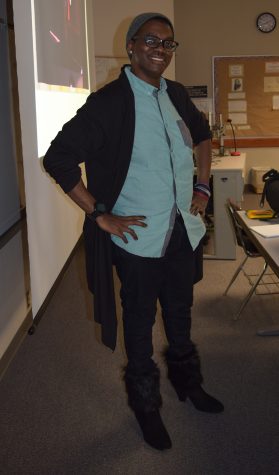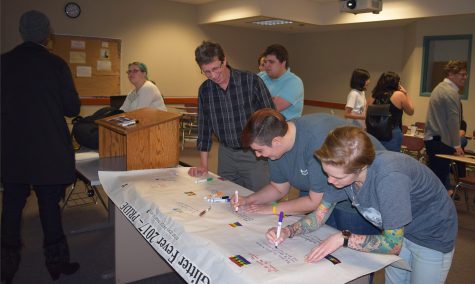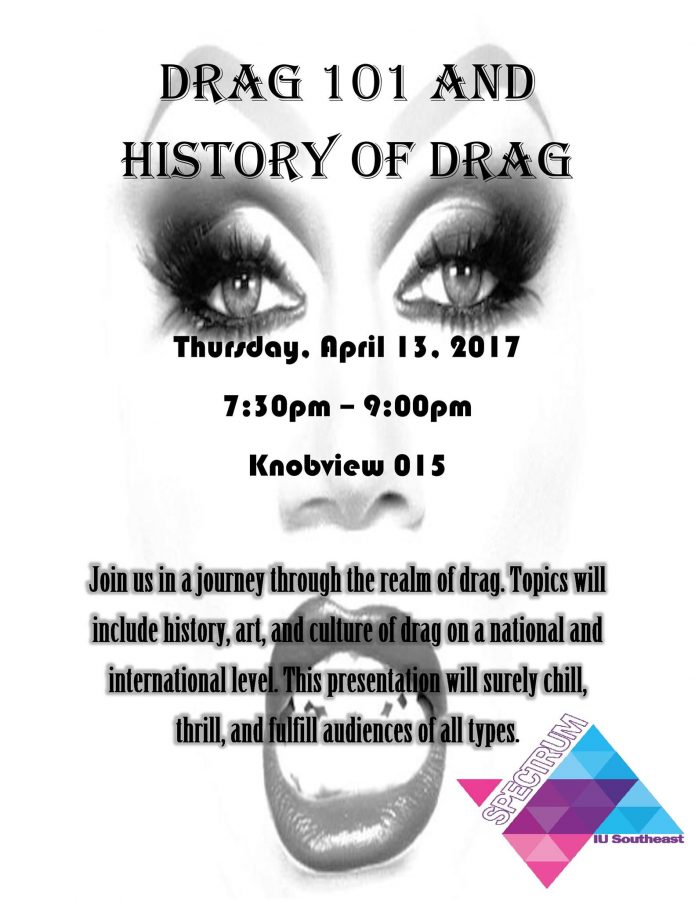Spectrum Discusses the History of Drag
Courtesy of the IU Southeast Spectrum Facebook page
Held on April 13, Drag 101 was held to educate people on the history, art and culture of drag.
April 14, 2017
Members of Spectrum are gearing up for their biggest event of the year, Glitter Fever, the annual drag show held each spring at IU Southeast. This year the group decided to hold an event to give spectators the chance to learn about drag culture and its history before the big event.

Stephon Camp, theatre junior and Spectrum president Elliot Bonsall, criminal justice junior, hosted the event.
“We have Glitter Fever this Saturday,” Camp said. “Everybody likes to know a little more about the culture.”
Bonsall said drag culture is a very inclusive culture and these events put that diversity on display. There is a lot of freedom in the drag culture.
“You can just be yourself,” Bonsall said. “You can dress how you want and just be the queen you always wanted to be.”
The event featured a presentation with pictures from last year’s drag show. Then they presented information about the various aspects of drag culture.
Camp and Bonsall explained the many assorted styles of drag. For example, you have “fishy” queens who like to look as feminine as possible. Then you have “pageant queens” who take the feminine look to another level and compete in beauty pageant type events. Some lesser known drag styles are “androgyny queens” who are commonly known as the anti-queen; they usually present both masculine and feminine features with their style and tend to be more artistic.
They touched on several types of drag performers. The more common performers are drag queens, men who dress up and perform as women. Then there are drag kings, women who dress up and perform as men. Less commonly seen are faux queens, women who wear exaggerated makeup and styles used by drag queens and essentially are women performing as men dressed as a woman.
Many drag performers lip-sync and dance to well-known music. While others are known as comedy queens and perform as comedians.

The audience had the chance to see a video which featured some of the makeup techniques that drag queens and kings use to transform themselves.
Camp gave an overview of the history behind drag, which started with theatre performances in the 1600’s. Back then, men would dress as women to play female roles, since women were not allowed to perform on stage.
The audience had a chance to learn how drag has become a growing trend that has been incorporated into pop culture through music and movies since 1937. Many popular movies such as The Rocky Horror Picture Show, Ms. Doubtfire, Hairspray, The Nutty Professor and Big Momma’s house either featured male actors who portrayed a female character.
During the presentation, audience members learned some of the reason why people perform in drag. Drag can be a means of self-expression, self-exploration, a venue for making cultural statements and an opportunity for entertainers to find their niche.
Hayley Jackey, criminal justice junior, said she loved the presentation and learned a lot.
“I love drag,” Jackey said. “I have a friend who does drag. I am a bi-sexual so I fully support the LGBT community. I know several people in Spectrum. Everything they do I support.”
Shauna Kempf, Sociology Senior, said she has always been interested in drag culture.
“The more you learn about it, the more you realize it is family centered,” Kempf said. “It’s a strong community. It’s beautiful. The more you learn about it the more beautiful it gets.”


